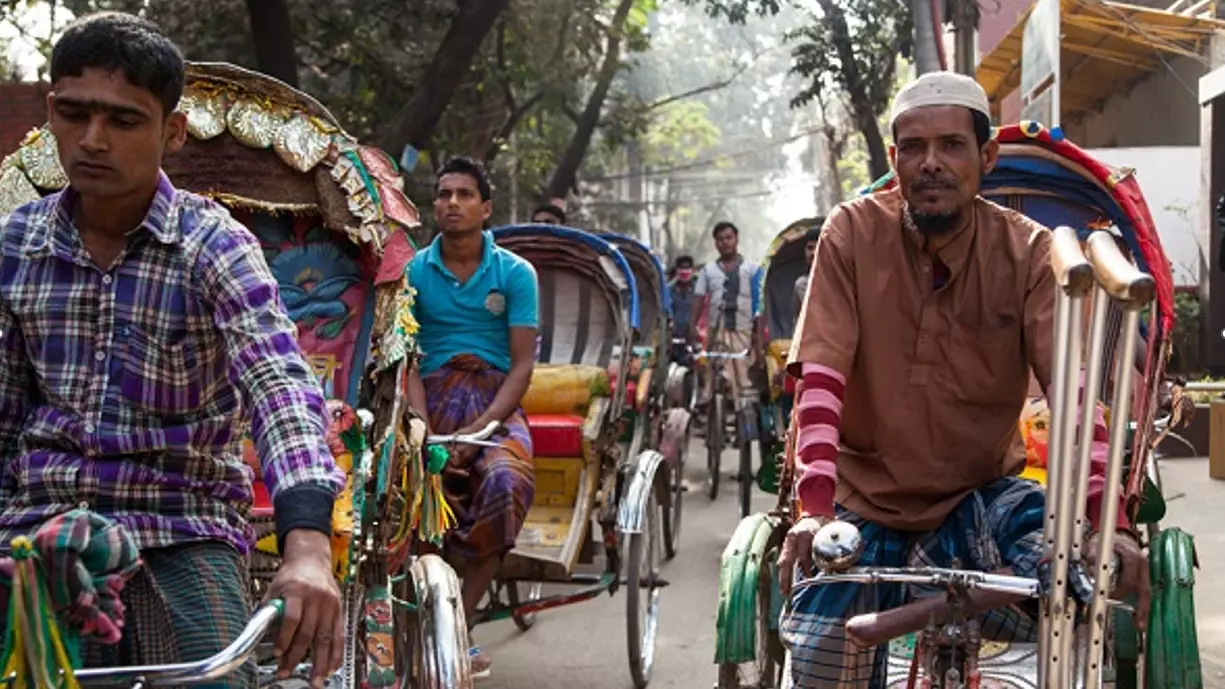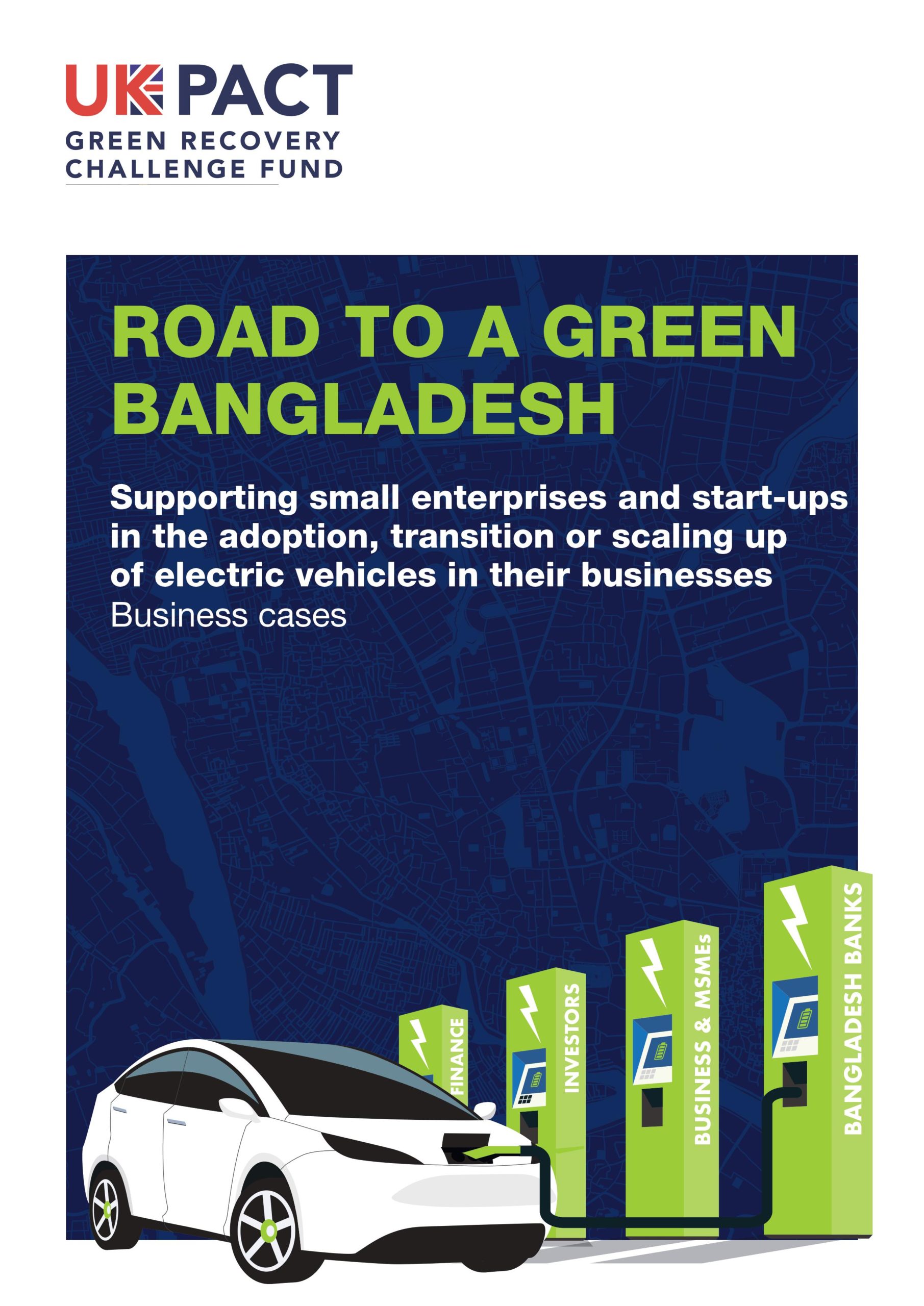GET IN TOUCH
- Please wait...

Electric vehicles (EVs) have been making headlines globally for quite some time now. Despite the industry’s swift progress across several countries, it has not been able to fully integrate the “Whole of Society” approach. With that being said, the economic value of physically disabled individuals is highly underappreciated, especially in developing economies such as Bangladesh.
Considering how climate change has been precipitating due to man-made problems, the benefits of using EVs have gained huge momentum over the past decade. Promoting EVs in Bangladesh can significantly improve the nation’s fuel economy and simultaneously create employment opportunities for the disabled individuals. By tying these two concepts together, countries can capitalize on the long-term sustainability of EVs and boost socio-economic development by reducing disability exclusion.
Being identified as one of the countries in the Next 11, Bangladesh has poised itself as Asia’s frontier market with rapid economic growth of ~6.5 percent over the past two decades. According to the IMF, Bangladesh’s economy is projected to reach USD 1.5 trillion by 2026.[1] The country’s impressive containment of the Covid-19 outbreak through a surge of public investments has uplifted the economy from the pandemic-induced slump. In parallel, the nation has set exemplary standards in socio-economic development in areas such as poverty alleviation, increasing women empowerment, and reducing maternal and child mortality. As a result, these achievements have fast-tracked Bangladesh to graduate from LDC status to a middle-income country by 2026.
However, the transport intensity of Bangladesh is comparatively lower than its neighboring countries, such as India and Vietnam.[2] The country is in dire need of sustainable transport infrastructure. The inauguration of the Padma Bridge is a major step forward in addressing the growing demand for transport, which has been a direct consequence of rapid urbanization. As a result, the transport sector has seen an increased dependency on fuel, making it the highest-emitting sector of GHG emissions in the country.
In line with the government’s target for reducing GHG emissions to 8.86 percent, deploying electric vehicles will reduce Bangladesh’s carbon footprint drastically. Transport electrification has the potential to positively impact different demographics of the country, including the consumers at the Bottom of the Pyramid (BoP). With fuel prices rising abnormally in the international market, the call for electric vehicles is now greater than ever. EV users can cut down their expenses on transport as a proportion of total income as maintenance costs are lower and energy efficiency is greater.
According to the Bangladesh Bureau of Statistics, 16 percent of an individual’s income is allocated to transport. The shift in the value chain for the automotive manufacturing industry towards electromobility will gradually lead to the emergence of supporting SMEs and their respective development.
Understanding Disability Inclusion
The transportation sector has been the highest receiver of the government’s development budget compared to others over the past decade. In the upcoming financial year, it will be receiving a striking 27 percent compared to the previous year’s 25.8 percent.[3] However, the system is not designed in a manner that extends to certain groups, particularly People with Disabilities (PWD). On a global scale, the disability market is estimated to control over USD 13 trillion in disposable income.[4] The United Nations Economic and Social Commission for Asia and the Pacific (UNESCAP) estimates that countries would see a rise in GDP between 1 to 7 percent if a physically disabled individual was paid the same as an able-bodied individual. Even the most conservative estimate revealed an increase in the GDP-PPP ratio to approximately USD 80 billion for ASEAN countries.
In Bangladesh, PWDs make up one-tenth of the total population and have huge potential to contribute to the nation’s economy if workplace accommodations are adjusted accordingly. The Bangladesh Sample Vital Statistics 2018, conducted by the Bangladesh Bureau of Statistics, discovered that nine people per thousand of the population suffer from at least one type of disability. These numbers are often neglected and are not accounted for in terms of measuring inclusivity.
Fostering a societal culture where PWDs are not considered as lesser members of the society who require charity will fundamentally change the socio-economic scenario in Bangladesh. These groups are heavily marginalized and are often deprived of basic human rights. In light of this notion, there is a lack of reliable data on disability prevalence in Bangladesh, which further proves how isolated these members are from society. Lack of access to employment opportunities has been identified as the biggest obstacle, with less than 20 percent of disabled individuals active in the labor force.[5] On that note, there is a lack of inclusion in the work environment for PWDs as they are often exploited with poor wages with minimal social safeguards. The scenario is infinitely worse for women, as they are often ostracized by their families primarily due to social stigma. A recent study quantified the economic costs of neglecting this group to be USD 891 million.[6] The figure below provides a comparative analysis of the unemployment rate for disabled and non-disabled individuals in Bangladesh. These numbers invariably tell us the challenges faced by disabled individuals are higher with the existing measures being inadequate. In the public sector, the 10 percent quota allocated to the PWDs is often filled up by orphans. The lack of knowledge and first-hand information further exacerbates these barriers to employment faced by disabled individuals.
Businesses have a fundamental role in fostering disability inclusion and disrupting the social stigma. This is especially applicable for the disabled communities in the rural areas who are considered to be charity cases rather than a contributor. The common misperception of disability inclusion is fueled by a lack of experience and knowledge, which is why it is assumed to be costly. The benefits outweigh the short-term expenses with solid evidence of increased shareholder value, brand reputation, and consumer loyalty.
Another important consideration is the rate of labor turnover, which is significantly reduced for companies investing in disabled workers. If acknowledged, the private sector is equipped with the resources to catalyze disability inclusion in the workplace. A study by Accenture revealed that companies accommodating disabled employees saw improved returns on investment, earning 30 percent higher profit margins and twice the net income of its competitors.
The relationship between accessible transport and economic growth cannot be overlooked as it helps combat social exclusion. A well-structured transport plan with the aim of reducing inequalities among its users can be the baseline for socio-economic development. Greater transport accessibility has the potential to enhance the transactive space of a metropolitan area, expand the labor shed and ensure competitive wage levels. The need for social inclusion in the transport sector is pivotal to a nation’s development as it is a major determinant in affecting productivity levels.
As seen in Bangladesh, the informal transport sector creates immense value to its economy in a manner that is not fully realized due to its unconventional nature. Within this context, electric vehicles have informally set foot across the country, by redefining mobility solutions covering short and mid-haul passenger transport. There is a growing number of battery-run electric three-wheelers (BRTW) which are estimated to be somewhere between 1.25 to 2 million. The unavailability of data and documentation of these vehicles categorizes this information as unofficial statistics, as there are no reliable sources to corroborate the actual number of EVs operating in the market. However, a study by the Asia Foundation revealed that electric three-wheelers move 25 million people in Bangladesh on a daily basis, and have created employment opportunities for 3 million people who belong to the lower-income segment.
Looking at the other side of the coin, the EV market is riddled with challenges that are impeding its growth. The nascency of this sector is accentuated by the deficiencies in the policy framework. With the EV ecosystem in India picking pace, policymakers can use their regulatory guidelines as a roadmap for adapting to Bangladesh’s context. Three-wheelers are prohibited to operate in several areas of the capital which is why the call for proper charging infrastructure remains unanswered. The tendency of informal charging is likely to continue, given the underdevelopment of the policy environment. The unregulated nature of the EV market curbs the scope for traceability, which brings us back to the problem of data insufficiency. It is difficult for businesses to make decisions and shift their resources into the e-mobility space when they do not have the relevant information to generate useful market insights. However, growing enthusiasm among local market players coupled with increasing public sector commitment indicates that a dynamic shift within this industry is beginning to sprout.
An interesting observation that has been seen among PWDs from lower-income households is that they have reshaped their reality with the help of electric three-wheelers. A growing number of disabled men and women have resorted to driving three-wheelers to be more self-sufficient and provide for their families. Hence, the need to formalize the electric three-wheeler market is greater than ever because of the untapped market potential these groups have to offer.
With proper recognition and development of sustainable charging infrastructure, these individuals who were previously marginalized now have a source of stable income thus improving their standards of living. It can be a radical step in integrating PWDs into the economy. The easy-to-use nature of the three-wheelers is another advantage because a major portion of PWDs does not have access to quality education. However, poor documentation practices has caused these individuals to go unnoticed, which further indicates how big the informal economy is in Bangladesh.
The absence of reliable data inhibits organizations from understanding the full picture regarding disabled individuals residing in Bangladesh. At present, there is no central database that tracks the proportion of PWDs employed in the public and private sectors. With no effective monitoring mechanisms in place, the disability prevalence data cannot be leveraged for sufficient allocation of resources to foster the development of these marginalized individuals. The provisions in the National Skills Development Policy (NSDP) need to be translated into actionable initiatives to improve the existing measures practiced in the country. Moreover, the inadequacy of enforcement measures in the Disabilities Act fails to provide solutions for discriminatory practices.
In light of this, the International Labor Organization (ILO) has extended its support to the National Skills Development Council (NSDC) in developing a national social marketing strategy to raise the demand and skills of disabled people. With EVs gaining continuous momentum in Bangladesh, government authorities can combine the efforts of these institutions and create employment opportunities within the budding EV ecosystem. This can be achieved by initiating pilot projects to provide disabled individuals with low literacy an opportunity to be independent. The existing policy framework needs to be adapted to create an enabling environment for these individuals through inclusive social protection programs.
Establishing an EV Driver Academy can be a cohesive approach to educating electric three-wheeler drivers in rural areas, where disabled individuals can participate and develop a sense of belonging with the entire community. The program can cover a range of areas such as safety measures, customer service, and charging facilities among others to create awareness about the vehicle’s technology. Out of the 16 million disabled people currently residing in Bangladesh [7], it is safe to say that a significant portion can be addressed by developing the electric three-wheeler market.
Ameera Fairooz, Former Trainee Consultant at LightCastle Partners, has prepared the write-up.
 |
If you are interested to learn more about the Electric Vehicle adaptation in Bangladesh
|
Our experts can help you solve your unique challenges
Stay up-to-date with our Thought Leadership and Insights